Mojave birds crashed over last century due to climate change
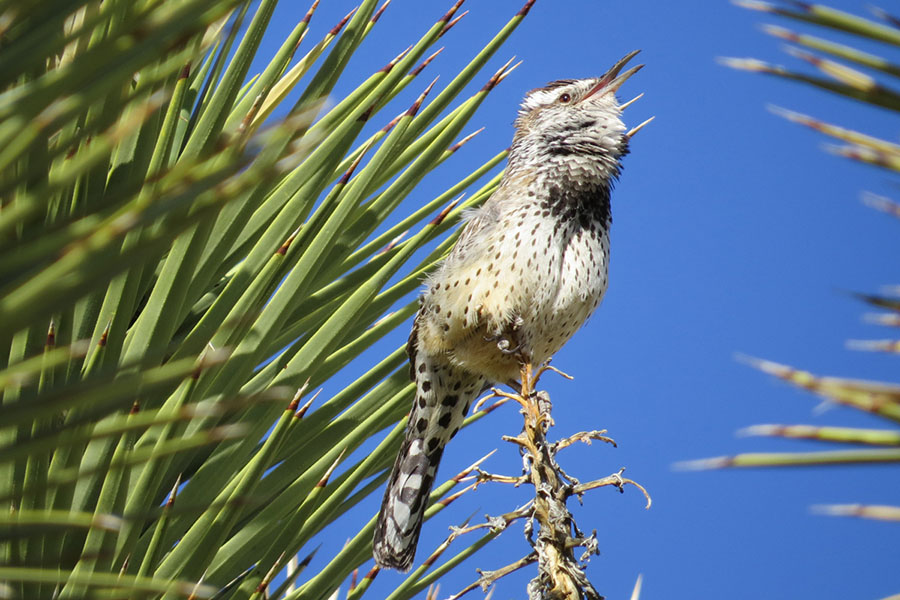
Bird communities in the Mojave Desert straddling the California/Nevada border have collapsed over the past 100 years, most likely because of lower rainfall due to climate change, according to a new University of California, Berkeley, study.
A three-year survey of the area, which is larger than the state of New York, concludes that 30 percent, or 39 of the 135 bird species that were there 100 years ago, are less common and less widespread today. The 61 sites surveyed lost, on average, 43 percent of the species that were there a century ago.
“Deserts are harsh environments, and while some species might have adaptations that allow them to persist in a desert spot, they are also at their physiological limits,” said Kelly Iknayan, who conducted the survey for her doctoral thesis at UC Berkeley. “California deserts have already experienced quite a bit of drying and warming because of climate change, and this might be enough to push birds over the edge. It seems like we are losing part of the desert ecosystem.”
The collapse could have an impact on desert plants that rely upon birds to spread their seeds and for pollination, she said, as well as on a host of creatures that prey on the birds.
Though the decline has happened across the entire Mojave Desert, sites with available water saw less decline, suggesting that dehydration is a major factor. To halt further losses, the authors suggest, it may be necessary in the short-term to create additional water resources and limit groundwater pumping, which depletes desert springs. The best long-term solution is to reduce greenhouse gas emissions and reverse climate change, the authors say.
The loss of bird species has happened even though much of the Mojave Desert is protected national park or preserve, including Death Valley National Park, one of the nation’s largest.
“This is a shot across the bow of our nation’s national jewels, telling us that climate change is already having an adverse impact even in our largest national parks and wilderness areas, and that we have got to reduce dependence on fossil fuels by smartly employing green energy,” said Steven Beissinger, senior author of the study and a UC Berkeley professor of environmental science, policy and management.
Iknayan and Beissinger will report their findings this week in the journal Proceedings of the National Academy of Sciences.
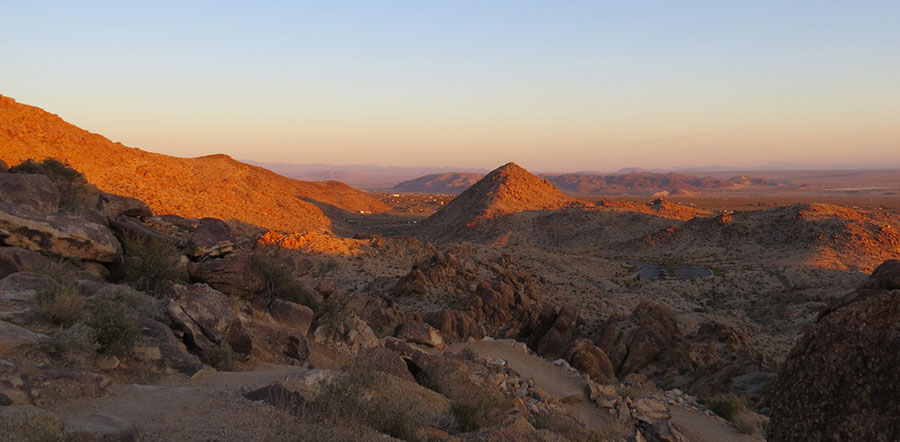
Raptors are down, ravens are up
The UC Berkeley team found a 42 percent drop in the number of bird species at Mojave sites. Raptors, with their meat-based diet, were one of the groups of birds that declined the most, including the American kestrel, prairie falcon, turkey vulture and sharp-shinned hawk – all fairly common in the early 20th century.
Rarer birds, such as the Virginia’s warbler, red crossbill, mountain quail and Lawrence’s goldfinch, are now even rarer.
Birds that are more adapted to the desert – the roadrunner and cactus wren, for example – and birds that can live in a variety of habitats, such as the Bewick’s wren and California towhee, fared better. Those adapted to grassland or forest did worse.
“A lot of these birds aren’t exclusively limited to the desert,” Iknayan said, noting declines in relatively widespread mockingbirds, killdeer and various sparrows and flycatchers. “Protecting their populations across the whole range can help a lot of these species to persist into the future.”
The only birds more common today in the Mojave are the common raven and four exotics: the great-tailed grackle, which migrated northward from the U.S. Southwest and Mexico; an imported game bird called the chukar; and the purposely introduced Eurasian collared dove and European starling.
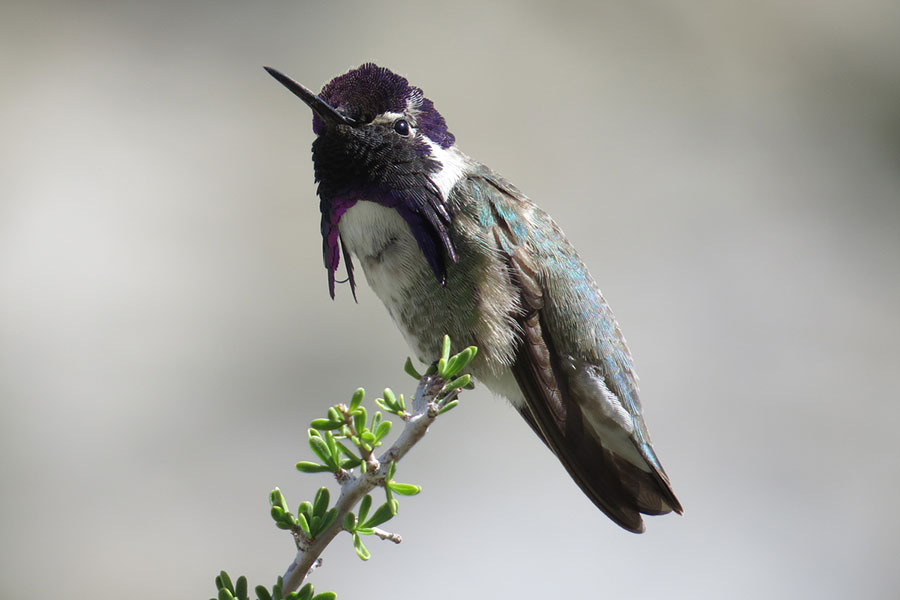
Beissinger refers to the widespread decline as a collapse because it has occurred across the whole desert bird community, unlike changes in bird communities elsewhere, which consist of some declining and some increasing species. The 42 percent decrease in species richness across the Mojave contrasts markedly with a 2 percent decline in richness at sites in the Sierra Nevada revealed by similar surveys.
Breeding bird surveys conducted by citizen scientists dating back to the 1970s confirm the drop in abundance in the Mojave, “which is why we think we are seeing a new, lower baseline” for desert bird populations, he said.
“Studies elsewhere have found that climate change typically makes places unfavorable for some birds but opens the door for others to come in,” Iknayan said. “In the desert we are not seeing increases in any of our species except for the common raven. There are a lack of climate change winners in the system.”
Taking good notes
Beissinger leads the Grinnell Resurvey Project to survey again areas of California that UC Berkeley biologists surveyed nearly 100 years ago, starting in 1908 with the arrival of Joseph Grinnell to head the campus’s Museum of Vertebrate Zoology. The goal of the project is to understand the changes wrought by human occupation of the state, including the impact of global warming and climate change.
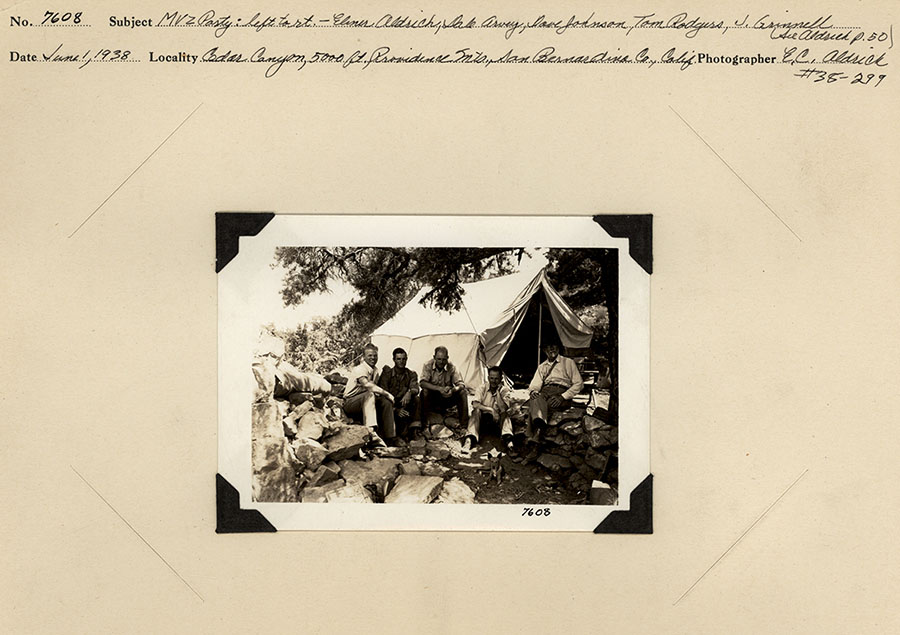
Joseph Grinnell, right, and members of his survey party of 1910. (Photo courtesy of UC Berkeley Museum of Vertebrate Zoology)
Thanks to Grinnell, who introduced a now-widely used method of recording field notes, today’s scientists have detailed data about bird and mammal populations and occurrence throughout the state, ranging from the Sierra Nevada and Cascade ranges to the Coast Ranges and Central Valley, and encompassing Southern California and, most recently, the deserts of the state’s southeast. Grinnell and his students conducted and dutifully recorded their observations between 1908 and after his death in 1940.
Iknayan and her colleagues visited the 61 Mojave sites, including 9 in Nevada, that Grinnell and his colleagues visited between 1908 and 1947. She spent three consecutive days at each site walking a path as close to Grinnell’s as possible, stopping at 10 places along each path and recording all the birds she saw or heard within 7 minutes.
She and Beissinger then conducted a statistical analysis to take account of the fact neither Grinnell nor Iknayan detected all the birds living at a site. The result was a chart of “occupancy” for each of the 135 birds, representing the proportion of surveyed sites the birds actually inhabited, even if undetected, in the early 1900’s and now.
They subsequently correlated occupancy with other data for the sites, such as long-term change in average annual temperature, average maximum temperature and average yearly rainfall as well as similar measures for recent years. They also looked at the history of fire, grazing and other habitat changes.
The upshot was that the most significant change associated with bird declines was a long-term decrease in precipitation. Sites that had reduced rainfall suffered more loss of species than sites that remained wetter. The long-term change in maximum temperature at a site was unrelated to species loss.
“The study is clearly showing an erosion of the number of species and the diversity at these sites that is pretty striking,” Beissinger said. “The Mojave Desert is now nearly half empty of birds. Is this a bellwether of changes to come in other protected areas?”
The Grinnell Resurvey Project is supported by the National Science Foundation (DEB-1457742, DEB-1501757, DGE-1106400), National Geographic Society, National Park Service and Museum of Vertebrate Zoology.
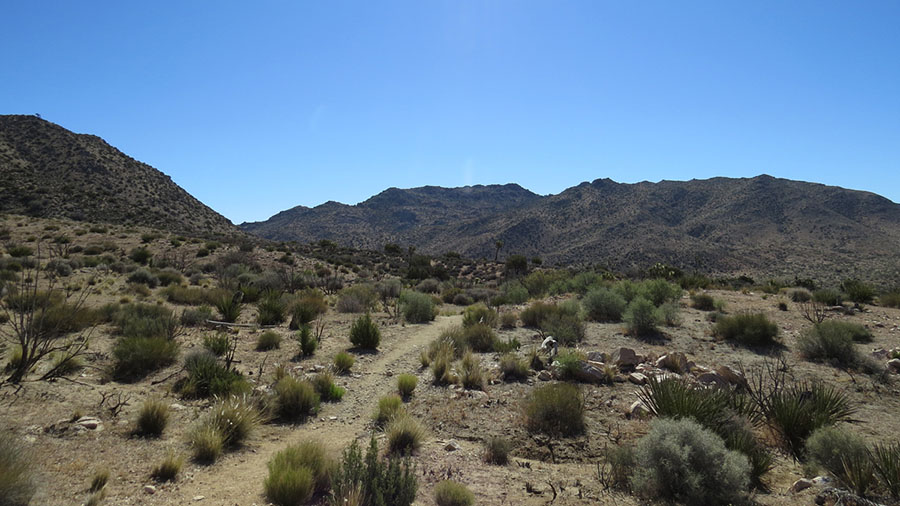
RELATED INFORMATION
